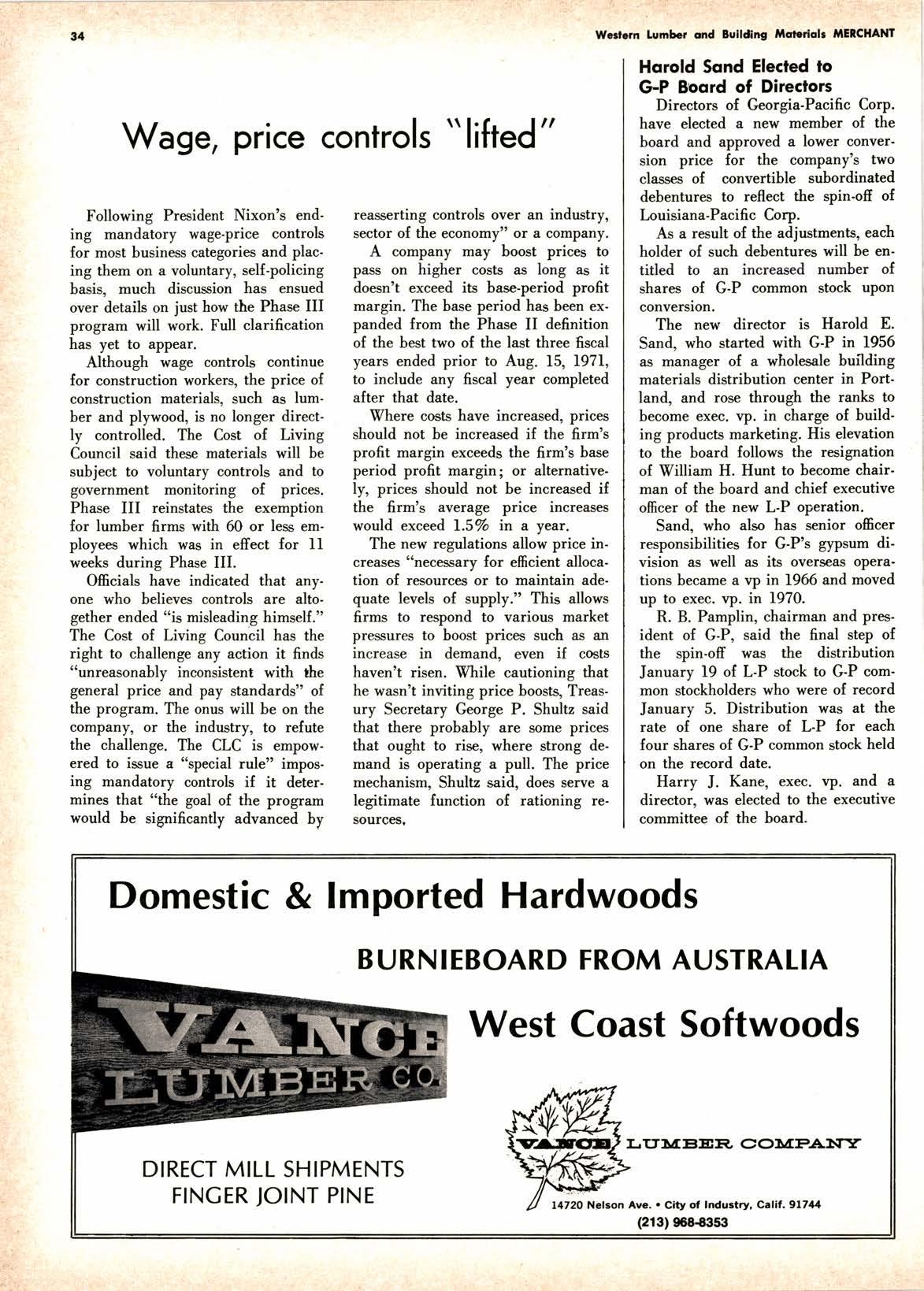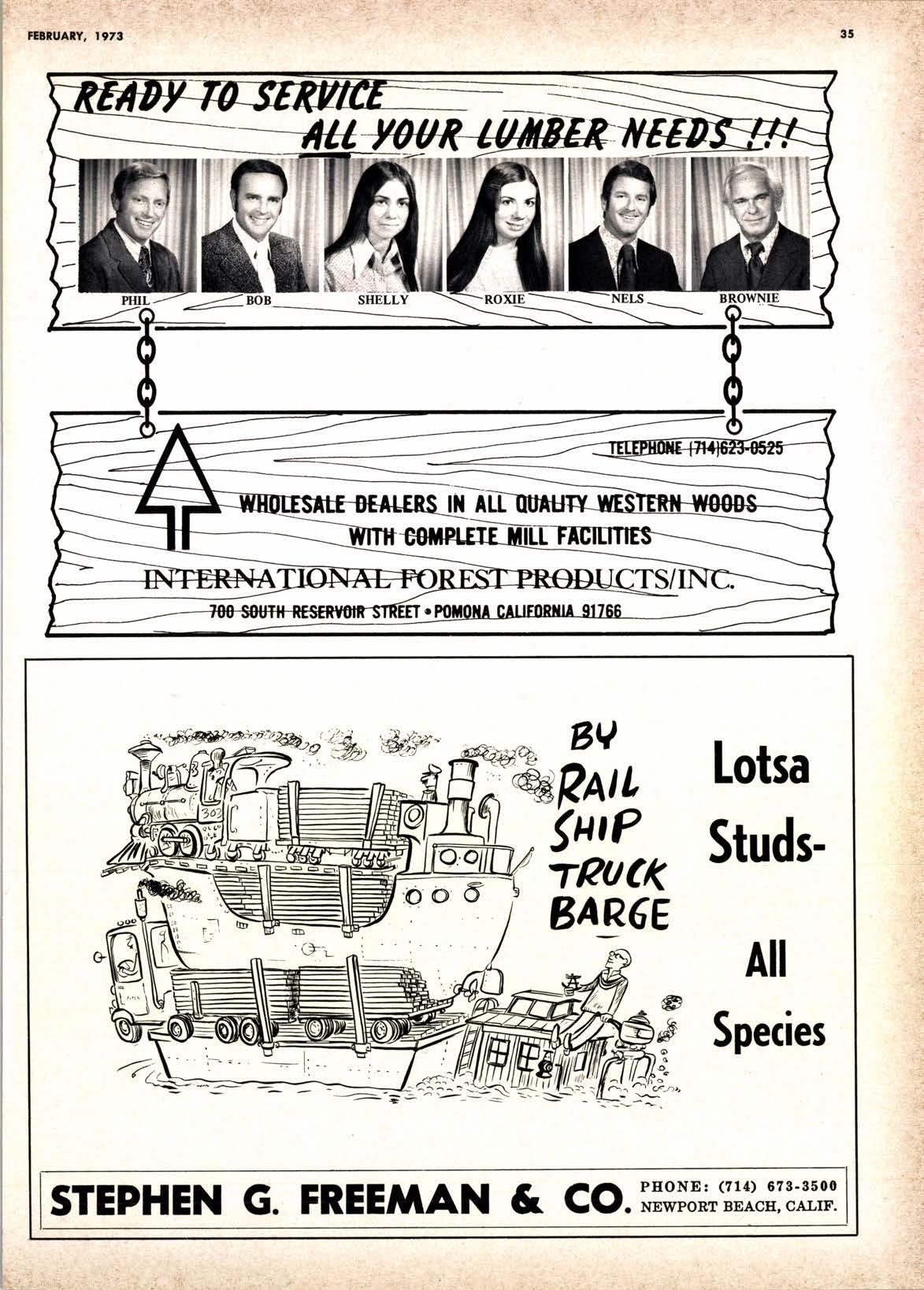
2 minute read
Wage, price controls " lifted "
Following President Nixon's ending mandatory wage-price controls for most business categories and placing them on a voluntary, self-policing basis, much discussion has ensued over details on just how the Phase III program will work. Full clarification has yet to appear.
Although wage controls continue for construction workers, the price of construction materials, such as lumber and plywood, is no longer directly controlled. The Cost of Living Council said these materials will be subject to voluntary controls and to government monitoring of prices. Phase III reinstates the exemption for lumber firms with 60 or less employees which was in efrect for Il weeks during Phase III.
Ofrcials have indicated that anyone who believes controls are altogether ended "is misleading himself." The Cost of Living Council has the right to challenge any action it finds "unreasonably inconsistent with tLe general price and pay standards" of the program. The onus will be on the company, or the indrutry, to refute the challenge. The CLC is empowered to issue a ttspecial rule" imposing mandatory controls if it deter. mines that "the goal of the program would be sigaificantly advanced by reasserting controls over an industry, sector of the economyt' or a company.
A company may boost prices to pass on higher costa as long as it doesn't exceed its base-period profit margin. The base period has been expanded from the Phase II definition of the best two of the last three fiscal years ended prior to Aug. 15, 1971, to include any fiscal year completed after that date.
Where costs have increased, prices should not be increased if the firm's profit margin exceedg the firm's base period profit margin I or alternatively, prices should not be increased if the firmos &verage price increases would exceed l.1Vo in a year.
The new regulations allow price increases "necessary for efficient allocation of resources or to maintain adequate levels of supply." This allows firms to respond to various market pressures to boost price such as an increase in demand, even if costs haven't risen. While cautioning that he wasn't inviting price boostg Treasury Secretary George P. Shultz said that there probably are some prices that ought to rise, where strong demand is operating a pull. The price mechanism, Shultz said, does serve a legitimate function of rationing resources.
Horold Sond Elected io Ct-P Boord of Directors
Directors of Georgia-Pacific Corp. have elected a new member of the board and approved a lower conversion price for the companyns two classes of convertible subordinated debentures to reflect the spin-ofi of Louisiana-Pacific Coqp.
As a result of the adjustments, each holder of such debentures will be entirled to an increased number of shares of G-P common stock upon eonversion.
The new director is Harold E. Sand, who started with G-P in 1956 as manager of a wholesale building materials distribution center in Portland, and rose through the ranks to become exec. vp. in charge of building products marketing. His elevation to the board follows the resigrration of 'lVilliam H. Hunt to bicome chairman of the board and chief executive ofrcer of the new L-P operation.
Sand, who also has senior ofrcer responsibilities for G-P's gypsum division as well as its overseas operations became a vp in 1966 and moved up to exec. vp. in 1970.
R. B. Pamplin, chairman and president of G-P, said the final step of the spin-off was tle distribution January 19 of L-P stock to G-P common stockholders who were of record January 5. Distribution was at the rate of one share of LP for each four shares of G-P common stock held on the record date.
Harry J. Kane, exec. vp. and a directoro was elected to the executive committee of the board.











